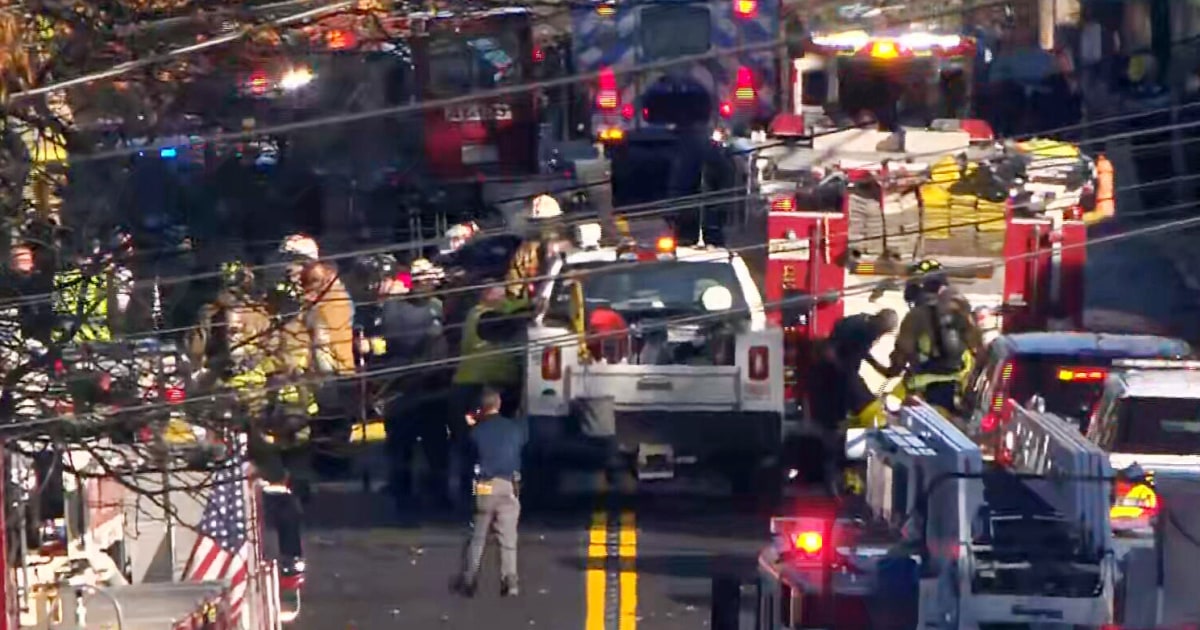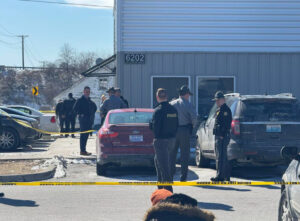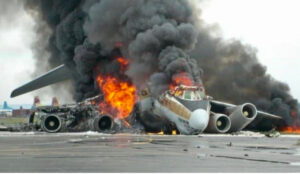Tragedy at Dawn: Massive Chemical Spill in Downtown Louisville, Forces Thousands to Evacuate Amid Chaos
Tragedy at Dawn: Massive Chemical Spill in Downtown Louisville Forces Thousands to Evacuate Amid Chaos

Louisville, Kentucky — May 6, 2025 — In a harrowing turn of events early Tuesday morning, downtown Louisville was thrown into chaos after a massive chemical spill led to the emergency evacuation of thousands of residents. The incident, which unfolded just before sunrise, has been declared one of the most severe environmental and public safety crises in the city’s recent history.
At approximately 4:45 a.m., a freight truck transporting hazardous industrial chemicals overturned on Main Street, near a densely populated commercial and residential district. According to preliminary reports from city officials and emergency responders, the vehicle was carrying a large quantity of phosgene gas, a toxic chemical compound once used as a chemical weapon during World War I and still used in various manufacturing processes today.
Moments after the crash, witnesses reported a loud hissing sound followed by a dense, yellowish-green cloud rising into the air. Almost instantly, residents in the area began experiencing severe respiratory symptoms, eye irritation, and dizziness. Emergency services responded swiftly, but the magnitude of the spill quickly overwhelmed local resources.
“This was a worst-case scenario — a volatile chemical release in a high-density urban environment,” said Louisville Fire Chief Monica Harris during a mid-morning press briefing. “We immediately initiated mass evacuation protocols and called in regional hazmat units to assist with containment.”
Within the first two hours, over 10,000 people were ordered to evacuate a three-mile radius surrounding the spill site. Dozens of city blocks, including parts of downtown’s business district, cultural centers, and residential high-rises, were cleared out. Authorities used a combination of emergency text alerts, public sirens, and door-to-door evacuations to move people to safety.
Local hospitals were inundated with patients suffering from exposure-related symptoms. According to University of Louisville Hospital, at least 250 people have been treated for chemical inhalation and related injuries, with over 30 listed in critical condition. Among those affected were emergency responders, several of whom were hospitalized after entering the contaminated zone without sufficient protective gear in the early moments of the response.
Governor Eleanor McAllister swiftly declared a state of emergency, authorizing the deployment of the Kentucky National Guard and requesting federal assistance from the Environmental Protection Agency (EPA) and the Federal Emergency Management Agency (FEMA).
“This is a deeply alarming situation,” Governor McAllister said in a televised address. “Our priority is protecting lives and ensuring the safety of all affected communities. We will get to the bottom of what caused this and make sure it never happens again.”
Investigators from the Department of Transportation Safety and EPA have launched a full-scale inquiry into the incident. Initial reports suggest that the truck, operated by Bluegrass Chemical Logistics, may have suffered brake failure while making a turn at the intersection of Main and Market Street. However, questions are being raised about whether proper safety measures were followed, especially given the highly toxic nature of the cargo.
Public backlash has been swift, with community leaders and environmental advocates expressing outrage that such dangerous materials were being transported through the heart of Louisville without sufficient safeguards.
“This could have been avoided,” said Councilwoman Teresa Noble, whose district includes part of the evacuation zone. “We’ve been warning for years that hazardous materials should not be routed through densely populated areas. Now families are suffering, and businesses are paralyzed.”
Shelters have been established at various high schools, churches, and the Kentucky Exposition Center, where thousands of displaced residents are currently receiving food, medical attention, and emotional support. Local businesses have shuttered, and all downtown public transportation has been suspended indefinitely.
The environmental consequences are also a growing concern. EPA officials confirmed that phosgene residue has contaminated nearby waterways and sewer lines, raising fears of longer-term ecological damage. Air quality readings remained dangerously high in some parts of the city as of Tuesday evening, prompting health officials to urge residents to avoid outdoor activities and keep their windows closed even miles outside the evacuation zone.
“Phosgene is highly reactive and extremely dangerous even in low concentrations,” said Dr. Luis Ortega, an environmental toxicologist advising the EPA team. “We are monitoring the situation closely, but the full impact may not be understood for days, or even weeks.”
Cleanup efforts are expected to take several days, if not longer. Hazmat crews are working around the clock to decontaminate the spill site and remove remaining containers from the damaged truck. Until then, large parts of the city center remain under lockdown, and residents are being warned not to return until given official clearance.
As Louisville grapples with the aftermath, stories of courage and community resilience have begun to emerge — neighbors helping elderly residents evacuate, first responders risking their lives to prevent further exposure, and volunteers pouring into shelters to offer food and comfort.
Still, the mood remains somber. For many, this tragedy has shaken their sense of safety in their own city. The long-term psychological, environmental, and economic impacts are only beginning to unfold.
“We may have survived the initial disaster,” said Chief Harris, “but recovery will be a long road.”
City officials have promised daily updates as the investigation and cleanup continue. In the meantime, Louisville remains on high alert, united in grief, but determined to rise from this devastating chapter in its history.













Post Comment